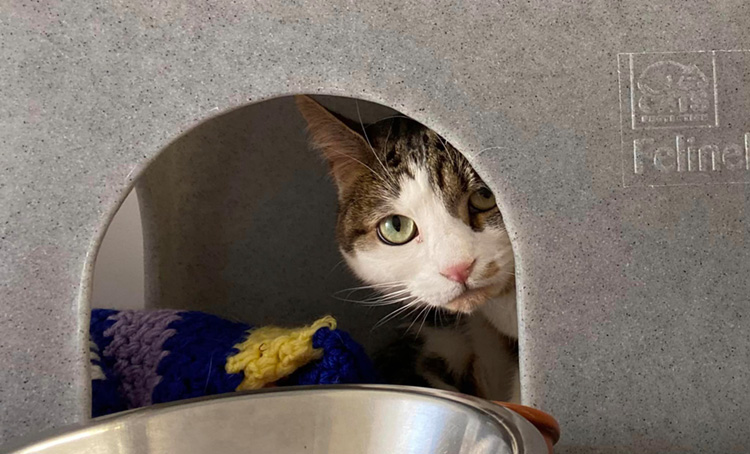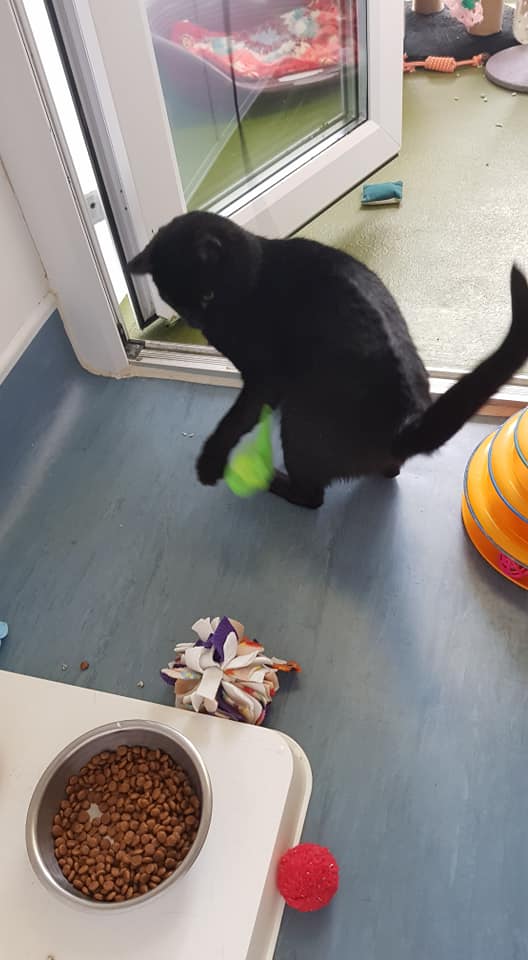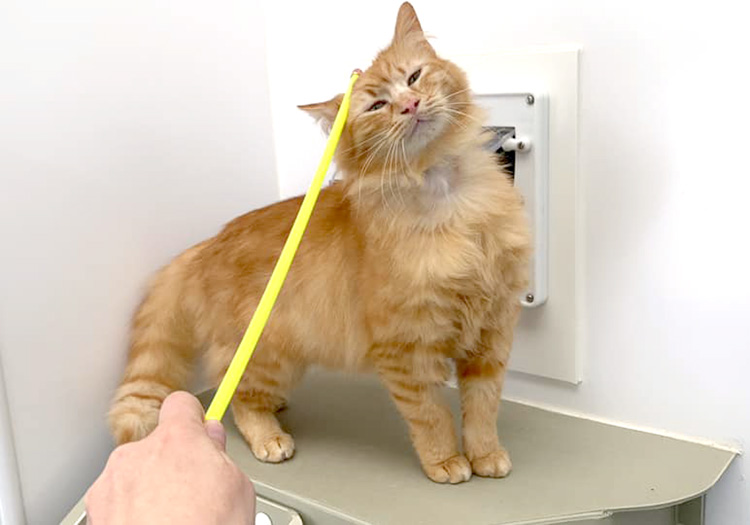New cat
How to set up your home to help your new cat settle in quickly
Cats, Adopters, Cat behaviour, Kitten

Patience and predictability is key, and always move at the cat’s pace. If you go a step too fast, then go back a few steps rather than one as you have broken that trust. This can take a few weeks to a few months, completely depending on the cat.
Each session should be quite short, 5-10 minutes is plenty. Start with sound, then move on to food and/or play, and finally touch.
Talk gently and quietly to nervous cats when you are in their room. At the cattery, we have the radio on, and sometimes just sit in their pod and read the news out loud to them just so they are aware we are about and mean no harm. Avoid maintained eye contact and sit side-on to their hidey hole.

Some cats are more motivated by play than food so this could be the way to bond with them.
Start by using wand and teaser toys as these with longer handles help to create distance between you and the cat. Test to find what they prefer, feathers, a fishing rod, string or even the stick of the wand toy can be a favourite. Attempt play first slowly dragging along the ground and then up in the air (without too fast movements as not to scare them more!) as some cats prefer to hunt rodents/ground dwelling prey and some prefer birds and to swot prey from the air – find what your cat likes!
Even if the cat becomes fixated on the toy but doesn’t chase it, that still means the hunting sequence has been initiated and they are interested, so keep going. Cats love to ambush their prey, so try dragging the toy behind something or make it disappear or reappear slowly, in the wild prey wouldn’t be out in the open, so mimic how they would behave in play too.
As they get more into the play bring the cat out in the open more gradually, but don’t try and touch them, stay still and let them sniff you if they come close. Each time they are brave and venture a bit further but nothing bad happens it will reinforce that its safe.
TOP TIP: Rotate toys. Cats get very bored of toys quickly, so keep some toys back and swap them out regularly to keep them interested. Use catnip spray or dried, to keep it extra interesting!

Hands can be very scary to a nervous cat - they may have a history of being hurt, picked up or grabbed at or just never have been touched at all.
Some cats can be simultaneously very frightened and yet crave human attention. Don’t assume that because they enjoyed a chin tickle that they are no longer nervous. Some slight noise or movement will still spook them.
Watch the video below to see our team work with Bobby in the cattery (from November 2021), and you'll spot many of these techniques.